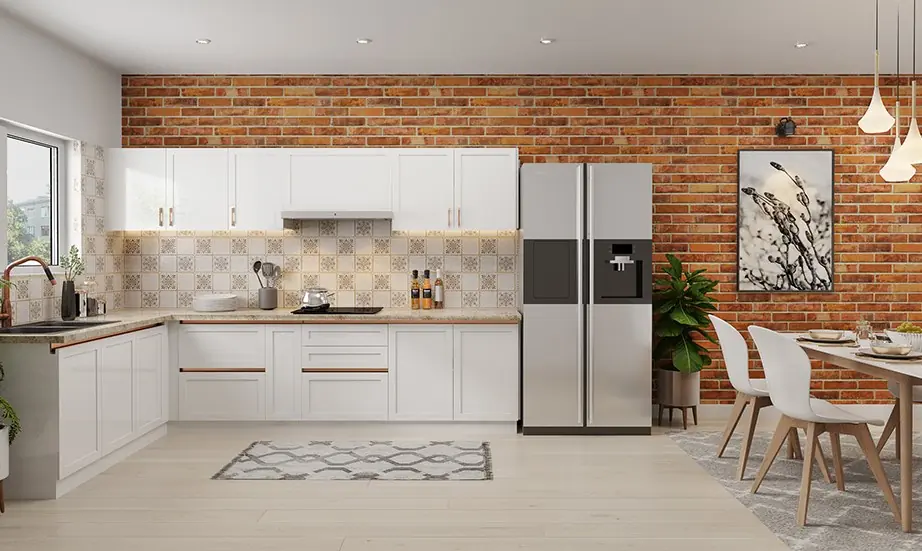Welcome to the wonderful world of container gardening! If you’re new to gardening or have limited space, container gardening is the perfect way to bring the beauty of plants into your life. As someone experienced in container gardening for beginners, I’m here to guide you through the process and share some valuable tips and tricks along the way.
Container gardening is a versatile and accessible form of gardening that allows you to grow plants in pots or other containers, even if you don’t have a traditional garden space. With a little patience, creativity, and the right techniques, you can transform any balcony, patio, or window sill into a lush green oasis.
Choosing the Right Containers
Consider Size and Material
When it comes to selecting containers for your plants, there are a few factors to consider. First and foremost, size matters. Most plants require a certain amount of space for their roots to grow and thrive. Choose containers that are deep and wide enough to accommodate the specific plants you want to grow.
The material of the container is also important. Terracotta and clay pots are popular choices because they are porous and allow for better airflow, but they can dry out quickly. Plastic and resin containers, on the other hand, retain moisture better and are lighter to move around. Consider the needs of your plants and the conditions of your space when selecting the material for your containers.
Drainage is Key
Proper drainage is crucial for the health of your plants. Without it, excess water can accumulate, leading to root rot and other issues. Ensure that your containers have drainage holes at the bottom to allow water to escape. If your favorite container doesn’t have drainage holes, you can either drill some yourself or use a liner or saucer to collect excess water.
It’s also a good idea to elevate your containers slightly off the ground to prevent water from pooling underneath. This can be done by placing pot feet or bricks under each container.
Adding the Right Soil Mix
The soil you choose for your container plants is just as important as the containers themselves. Regular garden soil is not suitable for container gardening. Instead, opt for a high-quality potting mix specifically formulated for container plants. These mixes are lightweight, well-draining, and nutrient-rich, providing the ideal environment for your plants to grow.
Before planting, fill your containers with the potting mix, leaving enough space at the top to accommodate watering. Avoid compacting the soil too much as it can hinder root growth.
Taking Care of Your Container Plants
Watering
One of the most critical aspects of container gardening is proper watering. Unlike plants in the ground, container plants have limited access to water and can dry out quickly. Check the moisture level of the soil by sticking your finger about an inch below the surface. If it feels dry, it’s time to water.
Water your plants thoroughly until the excess water drains out of the bottom of the container. Be careful not to overwater, as this can lead to root rot. Regular watering is essential, especially during hot summer months when containers tend to dry out faster.
Fertilizing
Container plants rely on you to provide them with the necessary nutrients. Over time, the potting mix can become depleted, so it’s essential to fertilize your plants regularly. Choose a balanced, slow-release fertilizer specifically designed for container plants and follow the instructions on the package for application. In general, it’s best to fertilize every few weeks during the growing season.
Alternatively, you can use organic fertilizers, compost tea, or hydrolyzed fish emulsion for a more natural approach. Whichever fertilizer you choose, be mindful not to over-fertilize, as this can damage your plants.
Pruning and Deadheading
To keep your container plants healthy and encourage bushier growth, regular pruning and deadheading are necessary. Prune any dead, damaged, or diseased parts of the plant to promote new growth. Deadheading, which is the removal of spent flowers, encourages the plant to produce more blooms. This is especially important for flowering plants such as petunias, geraniums, and marigolds.
Use clean, sharp pruners or scissors to avoid damaging the plant. Take care not to remove more than one-third of the plant’s foliage at a time to prevent stress.
Common Container Gardening Mistakes to Avoid
While container gardening can be rewarding, it’s easy to make a few common mistakes, especially if you’re just starting. Here are some pitfalls to avoid:
Mistake 1: Choosing the Wrong Plants
Not all plants are suitable for container gardening. Make sure to select plants that are well-suited for the conditions of your space, such as the amount of sunlight, temperature, and humidity. Research the plants you intend to grow and choose varieties that thrive in containers.
Mistake 2: Overcrowding
It can be tempting to fill your containers with as many plants as possible, but overcrowding can lead to stunted growth and poor ventilation. Give your plants enough room to grow by spacing them adequately. Consider the mature size of the plants and plan accordingly.
Mistake 3: Neglecting Drainage
Ensure that your containers have proper drainage to prevent waterlogging. Without adequate drainage, your plants can drown, leading to root rot and other problems.
Mistake 4: Inconsistent Watering
Consistent watering is vital for container plants. Over or underwatering can cause stress and negatively impact their growth. Establish a watering routine that suits the needs of your plants and stick to it.
Mistake 5: Lack of Fertilization
Container plants rely on you to provide them with essential nutrients. Neglecting to fertilize them can result in nutrient deficiencies and poor growth. Regularly feed your plants with a balanced fertilizer to keep them healthy and thriving.
FAQs About Container Gardening for Beginners
Q: Is container gardening suitable for beginners?
A: Absolutely! Container gardening is a fantastic way for beginners to get started with gardening. It’s relatively low-cost, requires minimal space, and allows you to experiment with different plants.
Q: What are the best plants for container gardening?
A: Some popular plants for container gardening include herbs like basil and parsley, flowering annuals such as petunias and marigolds, and vegetables like tomatoes and peppers.
Q: How often should I water my container plants?
A: The frequency of watering depends on several factors, including the type of plant, the size of the container, and the weather conditions. As a general rule, water your plants when the top inch of the soil feels dry.
Q: Can I reuse the potting mix from season to season?
A: While it may be tempting to reuse potting mix, it’s generally best to start fresh each season. Reusing the same potting mix can lead to nutrient depletion and the buildup of diseases or pests.
Q: Can I overwinter my container plants?
A: Many container plants can be overwintered indoors, as long as you provide them with the right conditions. Before the first frost, bring your plants indoors and place them in a well-lit area away from drafts.
Q: How do I prevent pests and diseases in container plants?
A: Regularly inspect your plants for signs of pests or diseases. Remove any infected or infested parts and treat them accordingly. Avoid overwatering, as it can create a conducive environment for pests and diseases.
Q: Can I grow vegetables in containers?
A: Absolutely! Many vegetables, such as tomatoes, peppers, lettuce, and herbs, grow exceptionally well in containers. Just make sure to choose varieties that are suitable for pot cultivation.
Q: Can I create a container garden on my balcony?
A: Yes, balconies are perfect spaces for container gardening. Consider the amount of sunlight your balcony receives and choose plants accordingly. Don’t forget to check with your building management or landlord for any restrictions.
Q: Do container plants require full sun?
A: While most plants prefer full sun, some also tolerate partial shade. If your space doesn’t receive enough direct sunlight, you can opt for shade-loving plants such as ferns, begonias, or impatiens.
Q: How do I start seeds in containers?
A: Starting seeds in containers is an excellent way to grow your plants from scratch. Fill seed-starting trays or small pots with seed-starting mix, plant the seeds at the recommended depth, and provide the right conditions for germination. Once the seedlings are large enough, transplant them into larger containers.
Conclusion
Congratulations! You’ve made it to the end of this comprehensive guide on container gardening for beginners. With a bit of practice, patience, and a green thumb, you’ll soon be enjoying the rewards of tending to your own mini garden. Remember to choose the right containers, provide adequate care, and avoid common mistakes.
Container gardening opens up a world of possibilities, even for those with limited space. So why not embark on this exciting journey and start growing your own plants today? Happy gardening!
For more information on various topics related to gardening, make sure to check out some of our other articles:

